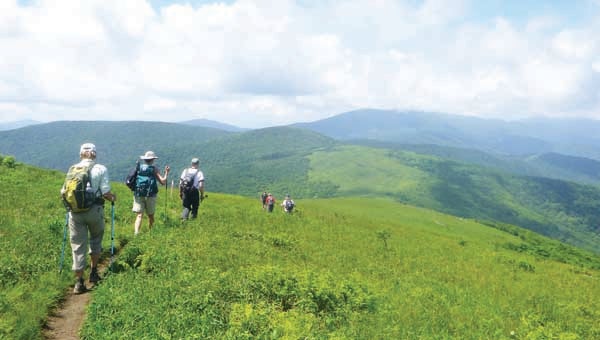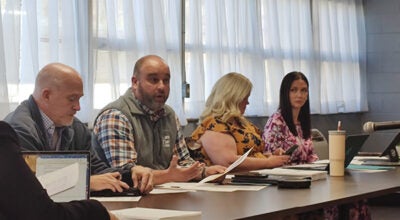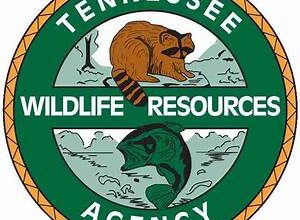Partnership helps increase awareness about mountain range’s ecology
Published 11:46 am Saturday, May 23, 2015

Contributed Photo/SAHC
Caretakers, seasonal ecologists and ridgerunners all have different job descriptions, but the main goal is to build a better understanding of the Roan Highlands for current hikers and future generations to enjoy.
Carter County residents and tourists mostly enjoy hiking the Roan Highlands for its breathtaking vistas, but several organizations are trying to make sure hikers don’t overlook the topics of ecology, preservation, conservation and stewardship.
For nearly 40 years, organizations involved in the Roan Stewardship Committee have been molding a program that has helped take care of the local mountain range.
Leaders of the Southern Appalachian Highlands Conservancy, Appalachian Trail Conservancy and the Tennessee Eastman Hiking Club have expressed the desire to inform Roan Highlands guests about a particular program, how it’s changed over time and how it protects the area for future use.
SAHC and the ATC are now officially referring to the position as a “Roan naturalist.”
“I think ‘Roan naturalist’ will stick,” SAHC’s Highlands of Roan Stewardship Director Marquette Crockett said.
History
In the late 1970s, SAHC initiated a caretaker program after concerns about trail conditions were raised during a committee meeting.
“The program started in 1976,” said Judy Murray, who retired from the SAHC’s Roan director position last year. “A (caretaker) position was patterned after Appalachian Trail Conservancy’s On Trail Education Program.”
Since then, the position has evolved along with what coordinators feel the Roan Highlands need.
The current SAHC staff is conducting research in order to have a comprehensive list of all the people who have participated in the initiative.
For about 30 years after Gatti, Crockett said the position was referred to as a “seasonal ecologist.”
“That person didn’t really do too much outreach,” she said. “They were looking for points of impact, rare plants and trail conditions.”
In addition to patrolling the AT and interfacing with hikers and campers, the seasonal ecologist conducted surveillance and site exploration, Murray said.
“While even the earliest seasonals engaged in biological field work, emphasis has continued to shift more heavily in that direction,” Murray said. “They would also conduct plant inventories with Paul Somers and the Tennessee Native Plant Society.”
After a while, Crockett said the seasonal ecologist began to do “similar things as a ridgerunner.”
“It’s just not a completely traditional ridgerunner position, and we thought “naturalist” captured it pretty well,” she said.
One of the most important responsibilities of a ridgerunner is promoting the Leave No Trace ethic, ATC resource management coordinator John O’Dell said.
“The position used to be more in line with ridgerunner programs that have been in place up and down the trail for decades,” O’Dell said. “Ridgerunners document visitation numbers and talk about Leave No Trace.”
Partnership
The ridgerunner title for the position came in 2013 when SAHC and the ATC joined forces.
Katryna’na Keely was the first to fill this position, and Fletcher Meadema took over as ridgerunner in 2014, according to SAHC records.
Supervision of the program has recently gone back and forth between SAHC and the ATC, Crockett said. “This will be the third year we’ve done this cooperative position with the ATC,” Crockett said. “Before that it was just a seasonal ecologist and it was just through SAHC.”
ATC license plates are helping fund the position, O’Dell said.
“We get revenue from North Carolina and Tennessee from our specialty tags,” O’Dell said. “That money is used to fund various projects in support of the trail, including land acquisitions.”
Instead of managing the position this year, O’Dell said the ATC delegated that responsibility to SAHC.
“We really value the protection of the natural resources in the Roan Highlands,” O’Dell said. “We’ve seen increase in use over the last few years. That translates into an increase in impact.”
There’s a balance that must be achieved through mitigating impact, but allowing the area to continue being used by the public, O’Dell said.
“We think the best approach to that situation is to educate the public,” he said. “The best way to do that is positive interaction.”
Each organization ensures its focus is represented through the position, SAHC Communications Director Angela Shepherd said.
“(SAHC is) committed to continuing preservation and stewardship of this rare, globally significant ecological resource,” she said.
Instead of the position focusing on one aspect or the other, SAHC and the ATC have been able to turn the position into a mix of stewardship, research-based and caretaking responsibilities.
“The core and essence of the position is the same — research and education, and with a component of management,” she said.
The ATC and SAHC joined forces because they realized that the mission of each organization affects the other.
“Part of the purpose of education is to reduce recreational impacts that damage and even destroy the fragile plant communities and ecosystems which make the Roan unique,” Shepherd said. “The Appalachian Trail area through the Highlands of Roan is extremely popular and many visitors may not know about the rare ecological communities that could be literally under their feet. So, it’s vital that this position is two-fold; each facet — education and research — is extremely important to the Roan.”
Impact
TEHCC members see many benefits from having a representative on the trail, said Joe Deloach, who plays a role both with the hiking club and SAHC.
“From the club’s perspective there is the benefit of educating visitors about what they can expect to see and what things are,” he said. “We have signs up, but sometimes it’s better to have someone to talk to.”
Flowers, birds and views skim the surface of topics about which Deloach finds visitors seeking the most information.
“There’s a good interpretation component that we think enriches the hiker’s experience,” he said.
With long-distance hiking on the rise and day hikers using the area frequently, Deloach said it becomes increasingly more important to teach people how to care for the area.
“Sometimes people get a little thoughtless about trash and campfires in places that are too sensitive,” he said. “They also may wander into areas that might contain rare species.”
Now that the Appalachian Trail was rerouted away from a kiosk, which is tucked away in the back parking lot at Carver’s Gap, relaying information to hikers has been a challenge.
“Only about 5 percent of the people who visit take a look at that kiosk,” he said. “So, our primary means of communication with visitors has been having a ridgerunner.”
As far as trail maintenance goes, Deloach said the person stationed on the Roan helps the club identify areas in need of attention.
“They help with cutting a few weeds, clearing trees that blow down across the trail and call us if there are bigger problems that need to be addressed,” he said. “They keep an eye on the shelters, too. There’s a prodigious amount of trash that accumulates at the shelters.”
The position has historically been seasonal, targeting the summer months when the area is used the most.
“They are there usually a little before Memorial Day into August,” he said.
By being present during the busiest times of the year, Deloach said the goals for the area are much more attainable.
“I hope the trail stays in better shape,” he said. “I hope the resource is more protected and there will be less trash and picking of rare plants. Also, people have a more enjoyable experience when they go up there because they know what to look for and have a richer more full visit to the Highlands.”
Crockett wanted to be sure to give thanks to all agencies like the U.S. Forest Service that play a role in creating and making the position a success.
“We’re all involved in making sure that the message that goes out to people is what we all agree on,” she said. “This came really from cooperation between agencies. Everybody noticed that really what we need up there is education.”
More details about SAHC’s mission are available online at appalachian.org. For more information about the ATC’s ridgerunner program, go online to appalchiantrail.org. If you’re interested in joining the TEHCC, go online to tehcc.org





